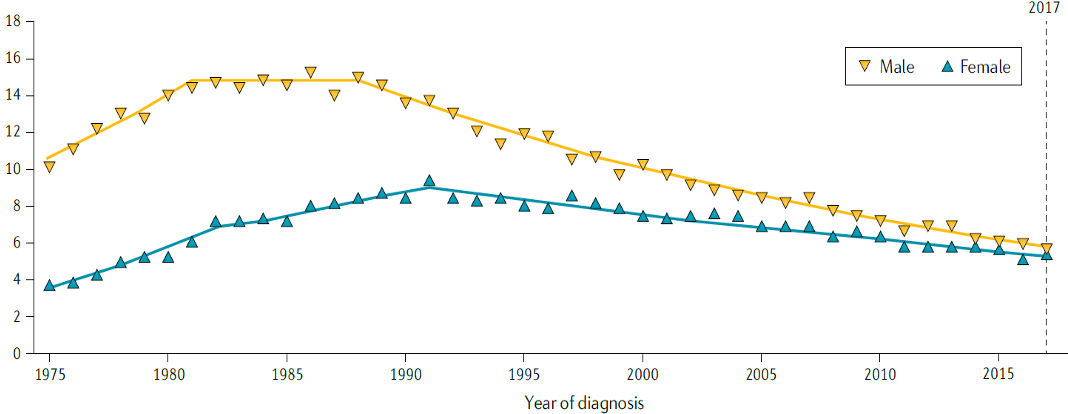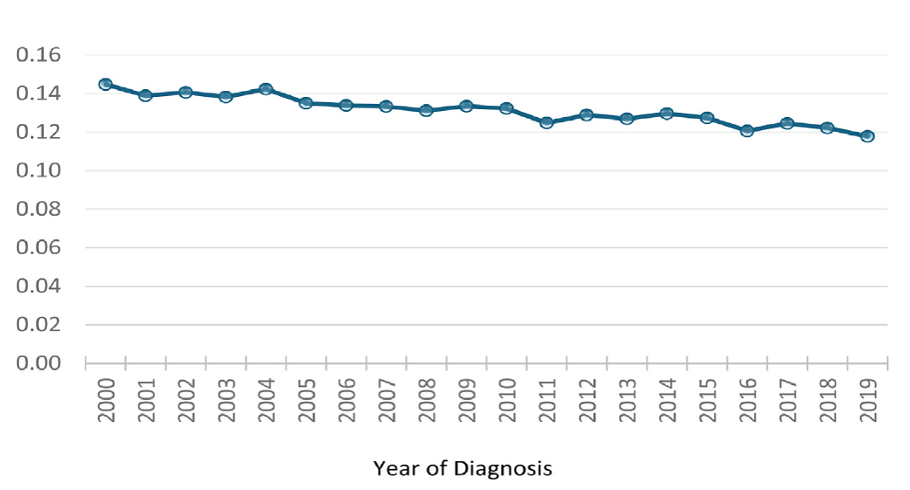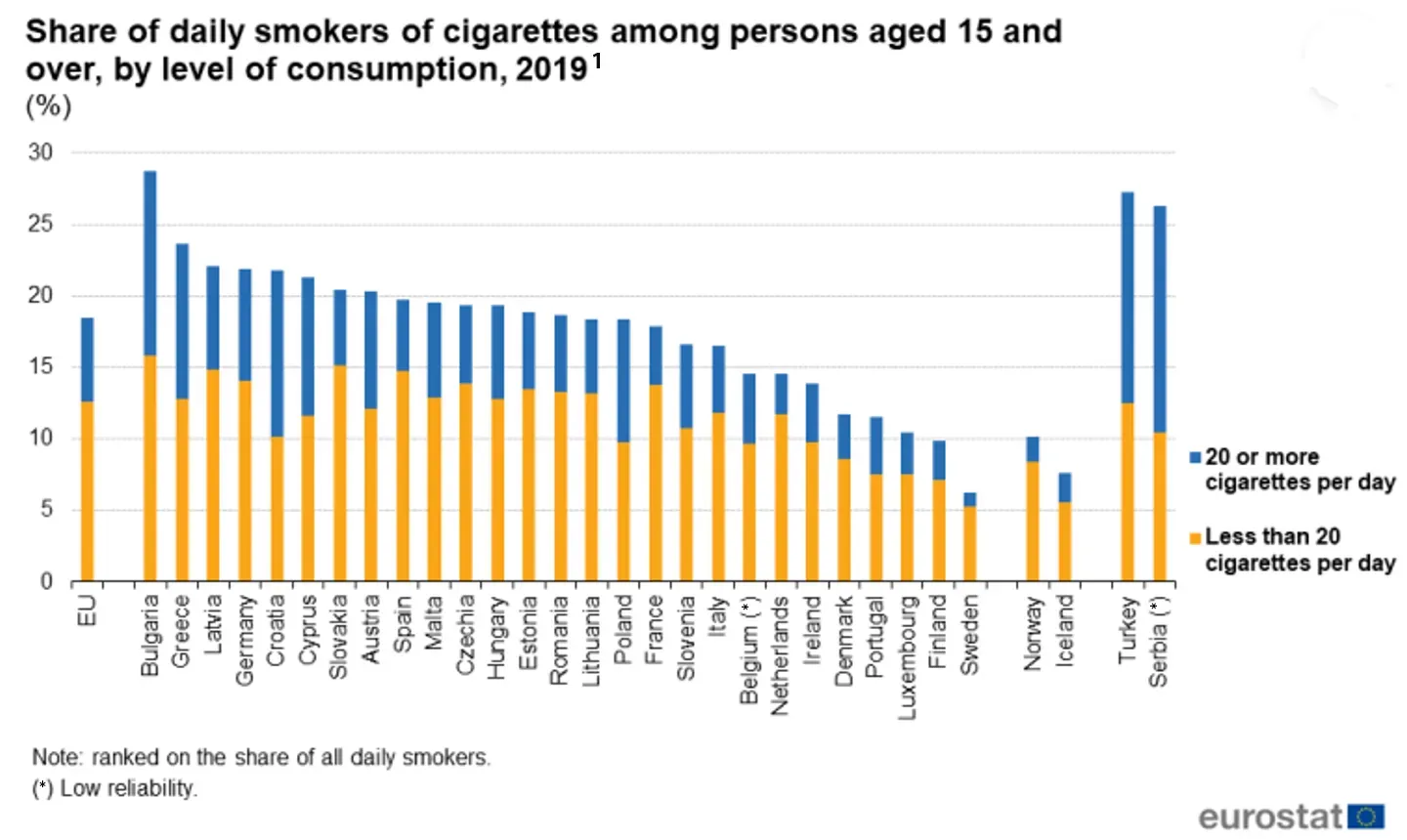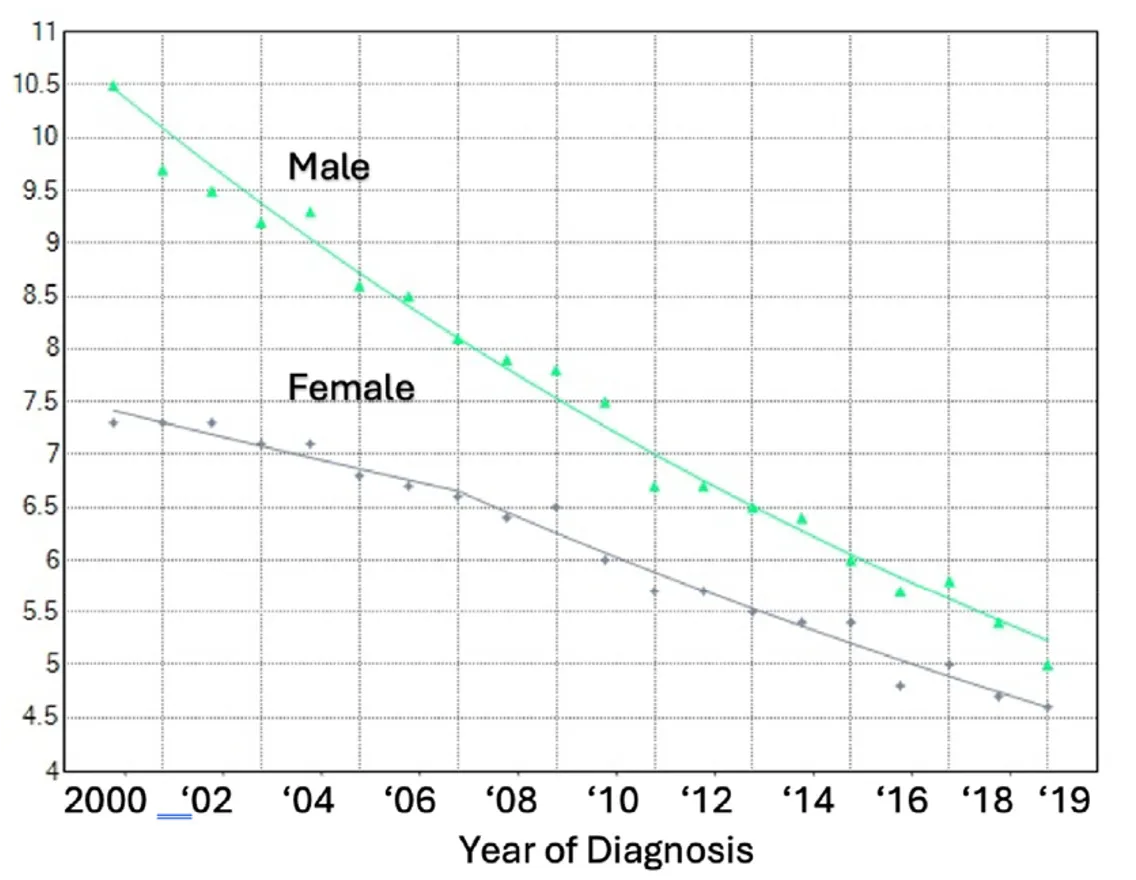Small Cell Lung Cancer in Simple Words
DEFINITION AND CHARACTERISTICS OF SMALL CELL LUNG CANCER (SCLC)
Cancer is a disease in which some of the body’s cells grow uncontrollably and spread to other parts of the body.
Lung cancer is originated in cells of the lung. A mass of cells with abnormal growth is formed, which might acquire the ability to spread to the surrounding tissues, to the lymph nodes and other organs outside the lung.
Types of lung cancer
There are 2 main types of lung cancer:
- Non-Small Cell Lung Cancer (NSCLC)
- and Small Cell Lung Cancer (SCLC)
Focusing on Small Cell Lung Cancer (SCLC)1,2
SCLC can arise anywhere in the lungs but usually originates in the major airways of the lung.
It is an aggressive, neuroendocrine carcinoma (originated from neuroendocrine cells, which release hormones into the bloodstream when they receive signals from the nervous system).
Most patients present with metastatic disease at the time of diagnosis.
Cigarette smoking is the leading risk factor for SCLC.
Typically affects patients between the ages of 60 and 70 years.
1. https://www.cancer.org/cancer/types/lung-carcinoid-tumor/about/what-is-lung-carcinoid-tumor.html
2. Wang Q et al. JTO.2023:18(1);31-46
Epidemiology
Lung Cancer is the first most common cancer worldwide1-2
Lung cancer is the first cause of death from cancer in males
ASR: Age-Standardized Rate (World) per 100 000, Incidence and Mortality, Males and Females, in 2022 (Top 15 cancer sites)
In most countries lung cancer is second in incidence and mortality in females
In Europe, lung cancer is also the first most common cancer1-2
In European males, lung cancer is the first cause of death from cancer
ASR: Age-Standardized Rate (Europe) per 100 000, Incidence and Mortality, Males and Females, in 2022 (Top 15 cancer sites)
In European females, lung cancer is second in mortality and the third in incidence
And the growth trend in lung cancer women continues1-2
In USA, Canada, China… (23 countries), lung cancer mortality in women already exceeds breast cancer mortality.
During 2024 in Spain lung cancer already surpassed breast cancer mortality.
Focusing on Small Cell Lung Cancer (SCLC)1-2
Over 85% of lung cancers are caused by smoking. In addition, smoking plays a major role in heart disease, stroke, and chronic obstructive pulmonary disease.
SCLC makes up about 15% of all lung cancer cases. It tends to grow very quickly, spread early, and has a poor outlook. SCLC is strongly linked to tobacco use.
In some countries, the steady decline in SCLC cases over time may be explained by a reduction in how many people smoke.
From 2000 to 2019, the number of new SCLC cases in the United States continued to decrease overall and across different population groups, likely reflecting lower tobacco use.
- Wells LE, Cohen S, Brennan B, Banerjee M, Kalemkerian GP. Epidemiology of SCLC in the United States From 2000 to 2019: A Study Utilizing the Surveillance, Epidemiology, and End Results Registry. JTO Clin Res Rep. 2025 Jan 20;6(4):100799. doi: 10.1016/j.jtocrr.2025.100799. PMID: 40104389; PMCID: PMC11914508.
- https://www.naaccr.org/wp-content/uploads/2021/07/NAACCR-Howlader-Plenary-2-Slides.pdf
SCLC incidence and survival statistics:1-2
The incidence of SCLC in the United States during the period 1975–2017 has been declining in line with trends in cigarette consumption.
Although SCLC was substantially more common in men than in women in the 1980s, the difference in incidence between the sexes has narrowed to essentially equal disease incidence by 2017.
Incidence SCLC per 100.000 persons
Proportional Incidence of SCLC relative to all lung cancer
- https://seer.cancer.gov/ 2025
- Epidemiology of SCLC in the United States From 2000 to 2019: A Study Utilizing the Surveillance, Epidemiology, and End Results Registry.Wells JTO, V6, I4 April 2025
- Source: Eurostat (online data code: hith_ehis_sk3e)
Gender trends1
Smoking rates declined more rapidly among adult men than among adult women, which corresponds to the greater decrease in SCLC incidence observed in men.
- Epidemiology of SCLC in the United States From 2000 to 2019: A Study Utilizing the Surveillance, Epidemiology, and End Results Registry.Wells JTO, V6, I4 April 2025
Classification
Staging of Small Cell Lung Cancer1,2
TNM stage: TNM is a way to classify cancer. It is based on 3 key pieces of information
- Primary tumor (T): describes the size of the tumour
- Regional Lymph Nodes (N): describes whether there are any cancer cells in the lymph nodes
- Distant metastasis (M): describes whether the cancer has spread to a different part of the body
- Numbers or letters appear after T, N, and M provide more details about each of these factors
- Higher numbers mean the cancer is more advanced
Although for SCLC the TNM classification is still useful, it is more usual to speak in terms of whether the disease is extended or limited, because this cancer tends to spread so rapidly that the TNM scale is not always applicable in such detail.
Classification as extended or limited is more practical, as the focus is more on immediate treatment and prognosis given its high aggressiveness.
TNM stages I–III generally correspond to limited-stage disease, and TNM stage IV to extensive-stage disease.
1. NCCN guidelines Small Cell Lung Cancer (Version 1.2026 — July 25, 2025)
2. AJCC Cancer staging manual 8th edition 2017.
SCLC can be discovered at an initial stage (called Limited Stage-LS), or when it is more advanced (called Extensive Stage-ES) 1,2
Limited stage (LS-SCLC)
Localized on one side of the chest only. Possibility to spread to adjacent lymph nodes.
Extensive stage (ES-SCLC)
Spread to both lungs, to the lymph nodes and other regions, such as bone marrow. May also be called metastatic disease.
Because symptoms are generally unspecific, the disease is often diagnosed late, with 60% of patients already in stage IIIb or IV at the time of diagnosis (extensive disease).
Cancer has spread widely throughout the lung or to other parts of the body.
1. Staging small cell lung cancer: Veterans Administration Lung Study Group versus International Association for the Study of Lung Cancer—what limits limited disease? – Lung Cancer
2. Limited-Stage Small Cell Lung Cancer: Current Chemoradiotherapy Treatment Paradigms
SCLC RISK FACTORS1-4
It is strongly correlated with smoking
Risk factors for in never-smokers are unknown, although it is supposed that environmental tobacco smoke exposure can play a role, as well as some risk arising from occupational exposures .
Passive smoking during childhood increases the risk of lung cancer in adulthood.
The Association between second-hand tobacco smoking and lung cancer can explain around 2% of lung cancers. There is a risk in people who have never smoked but live with a smoker.
There are other risk factors such as residential radon, occupation, diet, and certain leisure activities but they have not been studied in great depth.
Symptoms of SCLC
Most commnon symptoms:1-3
Shortness of breath:
Technically known as dyspnea, it is the feeling that you cannot get enough air into your lungs. It might feel like your chest is tight, you are gasping for air, or you are working harder to breathe.
Therefore, if you are or have been a smoker and have difficulty breathing, you should visit your primary care physician to rule out any problems
Coughing:
Reflex reaction designed to keep your airways clear. You may be coughing because of another condition, like asthma or a respiratory infection, or because you have swallowing difficulties.
Chest pain:
Pain or discomfort in any area of your chest. It may spread to other areas of your upper body, including down your arms or into your neck or jaw. Chest pains can be sharp or dull. You may feel tightness or achiness. Or you may feel like something is crushing or squeezing your chest.
Fatigue:
Extreme tiredness. Severe fatigue makes it difficult for you to get up in the morning and make it through your day. Many conditions and lifestyle factors can cause fatigue.
- NCCN guidelines Small Cell Lung Cancer (Version 1.2026 — July 25, 2025)
- https://my.clevelandclinic.org/health/symptoms?dFR[type][0]=symptoms
- Symptoms and Experiences with Small Cell Lung Cancer: A Mixed Methods Study of Patients and Caregivers
The symptoms associated with the different stages of the disease are described in more detail below.
Symptoms associated with the different stages
LIMITED STAGE:
Symptoms due to local primary tumor growth1-2
Pain
Weight loss
Cough:
A reflex reaction designed to keep your airways clear
Fever:
When your body temperature rises higher than normal. Itself isn’t an illness, it’s a symptom for a wide range of health conditions
Dyspnea:
The feeling that you cannot get enough air into your lungs
Fatigue:
Extreme tiredness
Hemoptysis:
When you cough up blood from your lungs (caused by local intrapulmonary tumour growth)
Wheezing:
Breathing with a whistling or rattling sound in the chest, when your airway is partially blocked
- NCCN guidelines Small Cell Lung Cancer (Version 1.2026 — July 25, 2025)
- https://my.clevelandclinic.org/health
LIMITED STAGE:
Symptoms due to local primary tumor invasion or regional lymphatic metastases1-2
Pericardial effusion:
The accumulation of excess fluid in the pericardial space (a membrane, that surrounds and protects the heart ), and tamponade (when this fluid accumulation becomes excessive, compressing the heart)
Elevation of one half of the diaphragm
Dysphagia:
Problems swallowing certain foods or liquids
Hoarseness:
It is a change in the quality of your voice, making it sound raspy, tense, breathy, or faint
Superior vena cava syndrome:
Obstruction of the superior vena cava ( a major vein that carries blood from the head, neck, and arms back to the heart)
Swollen lymph nodes*:
Above the neck or collarbone (lymphadenopathy)
* Lymph nodes: Small organs that form part of the lymphatic and immune systems. They act as filters for lymph (a fluid that circulates throughout the body, eliminating bacteria, viruses and other foreign substances)
Chest pain:
Involvement of pleura* or chest wall, often dull and non-localized
*Pleura: a thin, watery membrane that wraps around the outside of your lungs
- NCCN guidelines Small Cell Lung Cancer (Version 1.2026 — July 25, 2025)
- https://my.clevelandclinic.org/health
EXTENDED DISEASE:
Symptoms due to extrathoracic metastases1-3
Weight loss and fatigue:
Extreme tiredness
Bone metastases:
Bone pain, spinal cord compression–back pain, muscle weakness, paresthesia (the feeling of tingling, numbness or “pins and needles.”), loss of bowel and bladder control
Leptomeningeal* carcinomatosis:
Headache, confusion, cranial nerve paralysis, double vision, slurred speech, radicular back pain, spinal cord compression (leptomeninges*: the thin layers of tissue surrounding the brain and spinal cord)
Liver metastases:
Right side pain or tenderness, icterus (yellowish skin pigmentation due to high bilirubin levels) , fatigue, fever, hepatomegaly (enlarged liver)
Suprarenal glands* metastases:
Mid-back or flank pain, costovertebral angle tenderness.
(Suprarenal glands*: also known as adrenal glands, they produce hormones that help regulate many body functions)
Brain metastases:
Headache, focal weakness or numbness, confusion, slurred speech, instability and incoordination
Neuroendocrine symptoms:
Problems related to hormone production like the Syndrome of Inappropriate Antidiuretic Hormone (SIADH) which causes hyponatraemia (low sodium in plasma), renal water retention, low plasma osmolality (concentrated urine), and high urine sodium levels
- NCCN guidelines Small Cell Lung Cancer (Version 1.2026 — July 25, 2025)
- https://my.clevelandclinic.org/health/
- Small cell lung cancer and neuroendocrine tumours
Diagnosis & staging
SCLC diagnosis
Based on: Small-cell lung cancer: ESMO Clinical Practice Guidelines for diagnosis, treatment and follow-up
1. History and clinical examination
- Medical history (including smoking and comorbidities)
- Performance Status (PS): describes a person’s level of functioning in terms of ability to care for themself, daily activity, and physical ability (walking, working, etc)
- Physical examination
- Assessment of paraneoplastic* syndromes: Especially when initiating immunotherapy
(*rare disorders triggered by the immune system’s response to cancer)
2. Laboratory analysis
- Complete blood count (CBC): information about overall health condition
- Liver enzymes: to assess liver function
- Potassium calcium: essential in body fluid balance, muscle, nerves and heart
- Glucose: sugar blood level
- LDH (Lactate deshydrogenase) presents in many body tissues. To check tissue damage
- Renal functions tests: to assess how the kidneys are working
3. Imaging
Chest X-Ray:
An X-ray is a type of radiation that can pass through the body and onto film, producing images of areas inside the body.
It is usually the first imaging test to detect any abnormalities in the lungs.
CT scan (Computerized Tomography):
A computer connected to an X-ray machine to obtain a series of detailed pictures of the inside of the body. The images are taken from different angles creating three-dimensional (3-D) pictures of tissues and organs. Obtaining detailed images of the lungs and surrounding structures, helping to identify tumors and assess their size and location.
A CT scan of thorax and abdomen should always be performed.
Positron Emission Tomography (PET) / CT scan:
A small amount of radioactive glucose is injected into a vein, and a scanner is used to see detailed images of the glucose-absorbing areas of the body, since cancer cells absorb more glucose than healthy cells.
It's an optional test.
Bone scan (also called bone scintigraphy):
In case of suspiction of bone metastasis and no other metastasis, unless a PET-CT is available.
Magnetic Resonance Imaging (MRI):
It uses radio waves, a magnet and a computer to obtain detailed images of the inside of the body. A contrast dye (liquid solution) may be injected into a vein to make tissues and organs show up more clearly in the image.
It is used to further evaluate the extent of the cancer, particularly if it has spread to the brain or spinal cord.
In persons with stage I-III disease is mandatory and it is recommended for persons with stage IV disease who are eligible for prophylactic cranial irradiation (PCI) but choose not to undergo PCI.
4. Tumor biopsy
The diagnosis of SCLC is preferably evaluated based on histological examination of a biopsy. To perform this test, a sample of tissue or cells from the tumour is taken and examined under a microscope. There are different types of biopsies:
Needle biopsy:
An image-guided (CT or ultrasound) lung or lymph node tissue sample is taken.
Thoracoscopy:
Examination of the inside of the chest with a thoracoscope (a thin, tube-like instrument with a light and a lens). Tissue may also be removed.
Mediastinoscopy:
A thin, tube-like instrument with a light and viewing lens (mediastinoscope) is inserted into the chest through an incision above the breastbone. Tissue samples may be taken from the lymph nodes.
5. Assessment of pulmonary function
Several tests are performed to analyse the function of the airways and lungs.
Spirometry:
It determines how much air goes into and out of your lungs.
Lung volume test (body plethysmography):
To measures the amount of air your lungs can contain and the amount of air that remains in them after a deep exhalation.
Pulmonary diffusion capacity test:
To find out how much oxygen passes from the lungs into the blood when inhaling.
Bronchoprovocation test:
It measures the response of the airways to certain substances or situations.
Bronchoscopy:
A thin, flexible tube with a small camera is inserted through the nose or mouth.
It is used to view the airways in detail and collect tissue samples.
STANDARD TREATMENT OF SCLC
Limited stage:
Chemotherapy
Surgery
Radiation to the chest
Immunotherapy
PCI*
Persons with limited stage SCLC are treated with concurrent radiation and platinum chemotherapy. Surgery is only recommended for certain persons with very early stage; with only about 5% of persons eligible for surgery.
For those persons who have not progressed after chemoradiotherapy, consolidation with immunotherapy (treatment that uses the body’s own immune system to help fight cancer cells) is recommended.
LIMITED STAGE
*PCI: radiation to the brain used to prevent brain metastasis
NCCN guidelines Small Cell Lung Cancer (Version 1.2026 — July 25, 2025)
Extensive Stage: First Line
First line
Chemotherapy
Immunotherapy
Radiation
PCI*
It is usually initially treated with combinations of chemotherapy (containing a platinum regimen as carboplatin or cisplatin), with immunotherapy (treatment that uses the body’s own immune system to help fight cancer cells)
And a maintenance treatment with immunotherapy if exists respond to the initial combination treatment.
If the cancer responds well to initial treatment, radiation may be given to the chest.
If the cancer has spread to the bones, brain or spinal cord, radiation may also be helpful if there are symptoms (such as bone pain).
PCI may be considered to help prevent the cancer from growing in the brain.
EXTENSIVE STAGE
What happens if SCLC returns?
There is usually a good response to the first line treatment, however it is also common that the disease comes back. In that case, second line treatment would be started for which there are different therapeutic options.
*PCI: radiation to the brain used to prevent brain metastasis
NCCN guidelines Small Cell Lung Cancer (Version 1.2026 — July 25, 2025)



